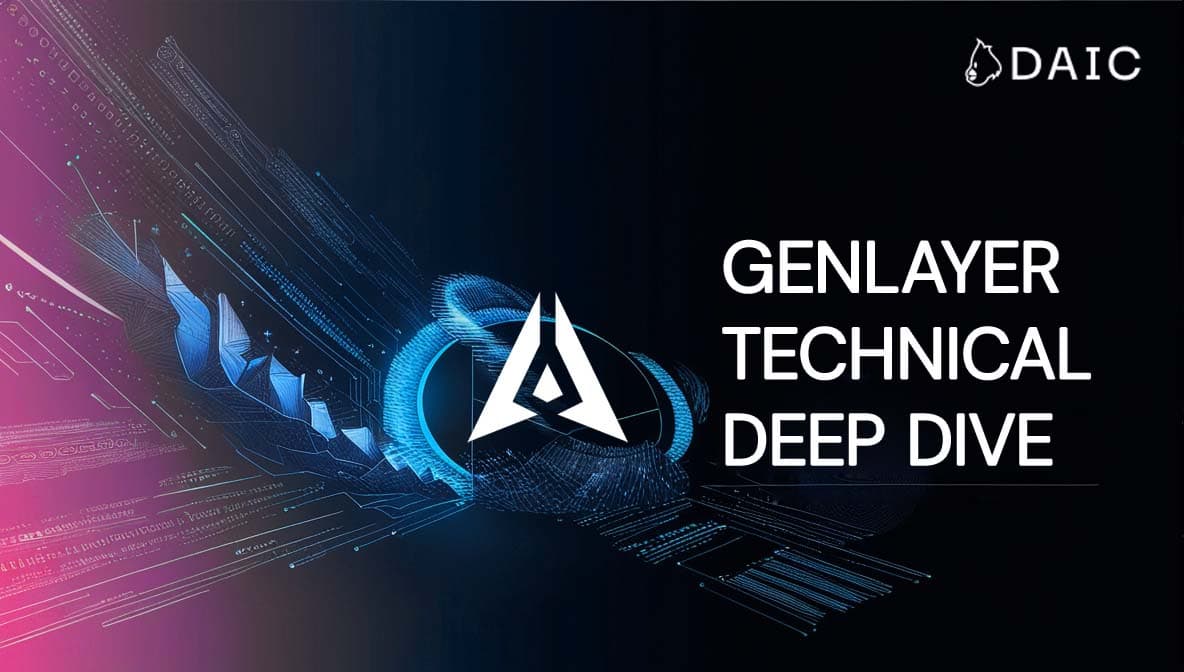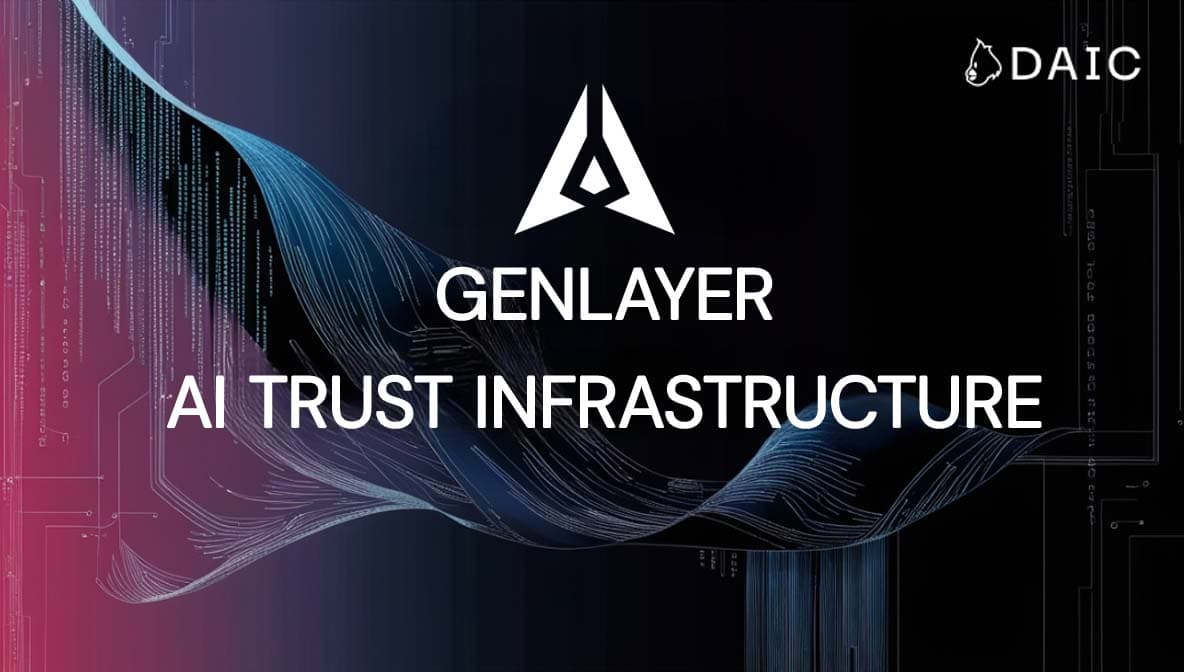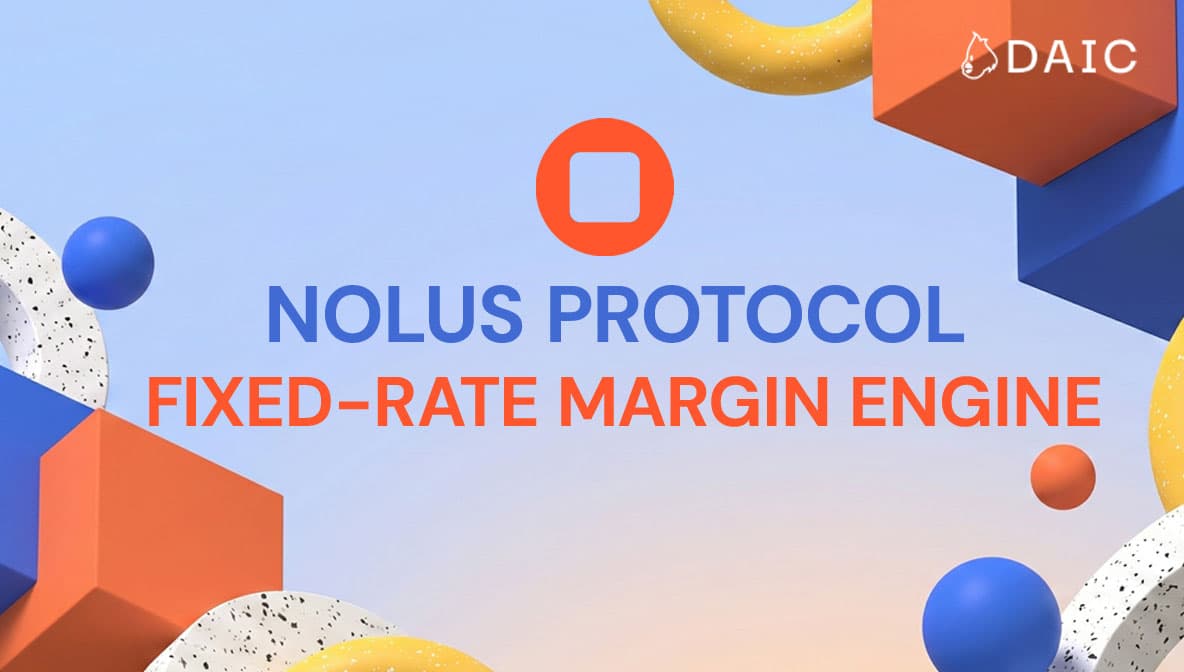The reality of Web3 is too often a landscape of unstable game economies, nerve-wracking security risks, and decentralized finance (DeFi) that ironically still leans on centralized weak points. But what if the solution wasn't just to build another blockchain, but to build a smarter one? That's the idea behind GenLayer, a new kind of blockchain that puts Artificial Intelligence at its very heart. By giving the blockchain the power to reason, GenLayer aims to clear these roadblocks, making the decentralized internet more secure, useful, and accessible for everyone.
Key Takeaways
- AI-Powered: GenLayer places Artificial Intelligence at its core to facilitate advanced reasoning on-chain.
- Resolving Web3's Challenges: The technology seeks to solve fundamental issues in big industries and the lack of trust.
- New Wave of dApps: As a secure and universal "intelligence layer," GenLayer stands ready to empower a new generation of dApps.
- Built on a Foundation of Trust: The entire platform is underpinned by a multi-layered security model to ensure its AI-driven operations are safe and reliable.
What Makes GenLayer Special?
So, why is GenLayer so unique? It's basically a combination of two extremely influential innovations that complement one another: Intelligent Contracts and Optimistic Democracy.
Think of Intelligent Contracts as supercharged smart contracts that, unlike their rigid predecessors, can understand natural language, allowing the blockchain to have a built-in digital assistant that can browse the web for information.
But a brain needs a conscience, and that’s where Optimistic Democracy comes in. That's GenLayer's special consensus algorithm, and it ensures that the discovered information by the Intelligent Contracts is real. Think of a set of AI validator nodes, every one using a different model such as ChatGPT or LLaMA, but functioning as an arbiter panel. The first validator proposes an answer, and the remaining ones vote on the basis of pre-set equivalence criteria, ensuring that the decision is correct and just. In case of any future dispute, an integrated mechanism for appeal settles the issue.
The whole process is protected by rigorous security, using techniques like Greyboxing to scan inputs and prevent fooling the AI or exploiting it. To ensure it all runs smoothly, GenLayer integrates with established Ethereum rollups like ZKSync for fast, low-cost transactions. And for those ready to build, a full suite of developer-friendly tools is available, including GenLayer Studio, a browser-based sandbox, and testnets like the recently launched Asimov (June 2025) and the upcoming Testnet Bradbury (Q3 2025).
DeFi: Making Finance Smarter and Safer
DeFi, or decentralized finance, was built upon a solid vision: redefining intermediary-free financial services like lending and trading. But to operate safely, the platforms depend upon a consistent stream of accurate, timely information on things like asset prices. Their reliance on oracles to obtain this information presents drastic risks and latency. Additionally, DeFi's growth is limited by the reality that traditional smart contracts are too rigid for complex financial transactions.
This is where GenLayer's artificial intelligence-powered solution will make a big difference. Its Intelligent Oracle is designed to provide an expedited, more secure way of bringing real-world information on-chain. A next-generation lending platform for DeFi, for instance, could use it to dynamically adjust interest rates as a function of real-time market information directly from trusted sources. More advanced trading would have it power perpetuals and options markets with the second-by-second information they require in order to operate properly.
By validating all of that information in its Optimistic Democracy consensus, GenLayer technology could potentially provide the stable foundation that DeFi needs to mature. More stable data can mean safer, more effective lending and trading exchanges, which will foster increased user trust system-wide.
Staking: Maximizing Returns Safely
Staking is one of the original building blocks of Web3 that allows users to lock up crypto to help secure a network in exchange for rewards. But the straightforward model comes with a huge drawback: your money is tied up and illiquid. That created the birth of more advanced methods like liquid staking and restaking, which are more adaptable but introduce extremely high new levels of complexity and risk to users to manage.
This is where GenLayer's potential lies - not in the actual staking, but in maximizing it actively. Its AI feature is designed to be like a top-level, automated staking coach who can execute the market's dynamics on behalf of the user.
Imagine a decentralized staking service or platform, powered up by GenLayer's tech. Instead of you having to keep an eye on the market all the time, this platform could have an Intelligent Contract as its 'brain' that takes care of your staked assets automatically. To facilitate liquid staking, it could handle the complex issuance and redemption of liquid staking tokens (LSTs) so they can be kept in value properly. For more advanced strategies like restaking on protocols like EigenLayer, its AI would always be assessing the risk and benefit of defending multiple networks at once, rebalancing your positions for maximum yield.
By applying AI to automate and optimize these advanced strategies, GenLayer's technology can potentially transform staking into an actively managed and capital-efficient investment. This could make the entire staking environment more secure and attractive, causing broader adoption and greater network security.
GameFi: Creating Fun, Fair Games
GameFi, the combination of gaming and decentralized finance, arrived with the exciting promise of enabling players to enjoy real rewards. However, an updated report of over 3,200 projects in 2024 painted a gloomy picture of the first wave of the sector. A staggering 93% of GameFi projects are effectively dead, with token prices plummeting by an average of 95% from their all-time highs.
The average lifespan of a GameFi project has been just four months. It is an old story as that of a hype bubble, where speculative tokens were usually the focal point rather than what gamers and investors really want: solid gameplay and sustainable, value-oriented ecosystems.
This is precisely the problem that GenLayer's technology is able to address. To create the sustainable economies that the industry needs, GenLayer intelligent solutions would help to analyze player behavior and market trends, and offer developers the tools to dynamically balance a game's reward system and prevent collapse. To enable fuller gameplay, its Intelligent Oracle would bring in real-world data, creating more dynamic experiences.
While the initial GameFi bubble has clearly burst, investors now are increasingly choosy and cautious, looking to invest in promising projects with the potential to provide long-term value. By providing the building blocks to develop more sustainable and enjoyable games, GenLayer is poised to play a role in this next, more mature wave of blockchain gaming.
NFTs: Building Trust in Digital Collectibles
Non-fungible tokens, or NFTs, introduced a groundbreaking way to prove ownership of digital assets. They exploded into the mainstream before being overshadowed by astronomical headaches. The NFT market has at times been a Wild West, with cases of fraud, copyright infringement, and volatile price swings creating a risky place for collectors and artists. Proving an NFT to be authentic or determining a fair price has been an ongoing problem.
GenLayer is designed to bring a new level of stability and confidence to this turbulent marketplace. Its AI-driven Intelligent Contracts could be employed as autonomous verifiers. An NFT marketplace on GenLayer could, before buying, have an AI confirm the metadata and on-chain history (its provenance) of the token, potentially cross-matching against artist databases to ensure it's real.
Besides verification, GenLayer technology will also be able to deal with price volatility. It can assess market trends and past data on big platforms like OpenSea and be used to provide fair valuation that allows buyers and sellers to make more rational choices based on information rather than cold hype.
GenLayer's technology has the potential to help the NFT world mature from being completely speculative to a more stable and robust community, embracing larger-scale participation from both artists and collectors.
The Next Big Leap: Organizations That Run Themselves
Arguably the most exciting application of Web3 is the Decentralized Autonomous Organization (DAO) or a member-governed organization with no CEO and no board of directors. As it turns out, most DAOs in the real world currently are clunky and slow, relying on an endless round of human votes on even petty choices, which is a serious bottleneck.
GenLayer is designed to allow such organizations to be completely self-sufficient by allowing its Intelligent Contracts to handle the heavy lifting of governance. Imagine a DAO where there is a single Intelligent Contract acting as an automated manager, applying sophisticated financial maneuvers based on rules already tested by the community. Perhaps most significantly, the DAO vote can be triggered automatically the moment Intelligent Oracle has ensured that certain things in the real world have occurred, closing the loop of vote to action without a human pressing the final button.
This ability to automate can free human members from concern over the details of administration to focus on strategic thinking on a large scale so that DAOs can be as speedy, efficient, and open organizations that they were meant to be.
Releasing A New Wave of Creativity
What's perhaps most exciting about GenLayer is the new realm of decentralized applications (dApps) that it could unlock. Traditional smart contracts are limited by rigid, deterministic rules, they're not designed to support the context and subjectivity of the actual world. GenLayer seeks to approach things differently and enable a new generation of autonomous and context-aware applications.
This technology has the ability to transform our approach to handling real-world assets and systems. For Real-World Asset (RWA) tokenization, an Intelligent Contract can validate ownership and worth of a property by pulling information from open land registers or marketplaces. For supply chain management, it can track goods in real time by connecting with logistics data from suppliers, automatically marking discrepancies to deter fraud. Even the energy sector could be transformed by dApps that automate trading on decentralized grids with real-time data, optimizing grid management.
This is a new capability that extends to professional and personal identity. For Decentralized Identity (DID), a user could certify a particular trait, such as age for an age-restricted service, without revealing the complete identity. In education, GenLayer would validate credentials from institutional database access, creating a safe and trustful system for digital diplomas.
The capacity to handle complex, subjective decisions can also reshape entire industries. In healthcare, it could validate medical records to pre-approve insurance claims based on vetted data from health systems. And on a larger scale, the GenLayer is designed to be capable of handling complex systems like decentralized autonomous cities, so that Al-mediated consensus can be reached on matters of subtlety policy.
Behind it is a commitment to Ethical AI. Embedding AI in the blockchain raises valid concerns over bias and transparency. GenLayer is intended to address this issue by employing a diverse array of AI models and solutions, ensuring that no single perspective has the ability to take control. Optimistic Democracy with dedicated security measures is designed to provide a base of trust for the next generation of fair and accountable AI-driven applications.
Conclusion: A Smarter Web3 is on the Horizon
The journey through Web3 has, for many, been a mix of excitement for its revolutionary promise and frustration with its practical limitations. We have seen how a lack of context and inability to fit nuance have been problems in all areas, from the security of DeFi to that of GameFi. GenLayer's vision is not just to address these separate problems, but to bring the missing component the ecosystem has anticipated: a smart, secure bridge to the physical world.
What if your decentralized apps could reason, learn, and make decisions based on current, verified facts? That's what the future GenLayer is building. It's a future where DeFi could be as reliable as it is revolutionary, where blockchain games are built for extended engagement, and where digital collectibles in NFT markets are underpinned with verifiable guarantees. It's a Web3 that could finally no longer feel so much like a wild frontier and more like a rich, interconnected digital community.
Of course, such a vision does not come to reality overnight. Challenges such as ensuring the decentralization, security, and dealing with regulatory uncertainty must be constantly resolved carefully. It's a complex process, but with foundations like GenLayer being built today, a more intelligent, decentralized tomorrow feels closer than ever.
The information provided by DAIC, including but not limited to research, analysis, data, or other content, is offered solely for informational purposes and does not constitute investment advice, financial advice, trading advice, or any other type of advice. DAIC does not recommend the purchase, sale, or holding of any cryptocurrency or other investment.


